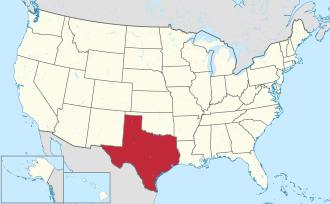Delta County | |
|---|---|
 Delta County Courthouse in Cooper | |
 Location within the U.S. state of Texas | |
 Texas's location within the U.S. | |
| Coordinates: 33°23′N95°40′W / 33.39°N 95.67°W | |
| Country | |
| State | |
| Founded | 1870 |
| Seat | Cooper |
| Largest city | Cooper |
| Area | |
• Total | 278 sq mi (720 km2) |
| • Land | 257 sq mi (670 km2) |
| • Water | 21 sq mi (54 km2) 7.6% |
| Population (2020) | |
• Total | 5,230 |
| • Density | 20.4/sq mi (7.86/km2) |
| Time zone | UTC−6 (Central) |
| • Summer (DST) | UTC−5 (CDT) |
| Congressional district | 4th |
| Website | www |
Delta County is a county located in the U.S. state of Texas. As of the 2020 census, its population was 5,230. [1] Its county seat and largest city is Cooper. [2] The county was founded in 1870 and is named for its triangular shape, [3] which resembles the Greek letter delta.
Contents
- Geography
- Major highways
- Adjacent counties
- Communities
- Cities
- Unincorporated communities
- Ghost towns
- Demographics
- Politics
- See also
- References
- External links
Meanders of two forks of the Sulphur River formed its northern and southern boundaries and meet at its easternmost point. Delta County was one of 19 [4] prohibition, or entirely dry, counties in the state of Texas. As of 2015 [update] , Delta County is no longer a dry county.
